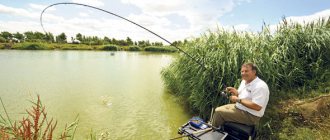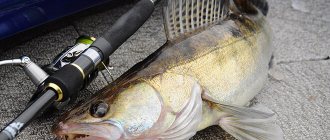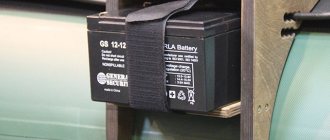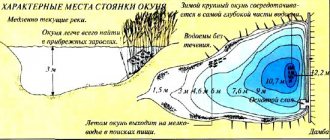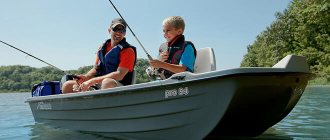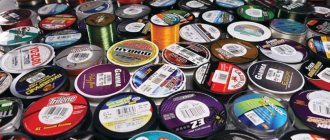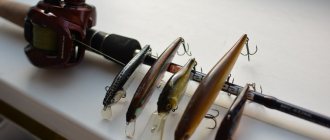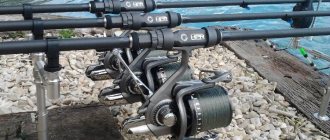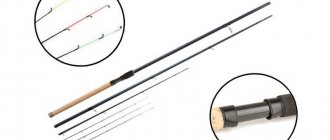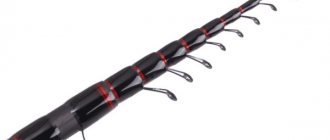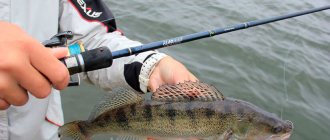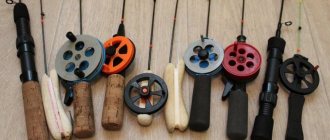Important features of fly rods, what features short and long fly rods have, their advantages and disadvantages.
Float fishing is still the most popular method of fishing in many regions of our country. It’s only at first glance that it seems that there are more spinners and bottomers in our country, they’re just visible, they swing wider and throw further. The floater, as a rule, is a quiet contemplator of the wonderful action called fishing, and often he “disguises” himself in thick grass or under coastal bushes so that he is completely invisible.
Short fly rod
A short swing with light equipment has allowed anglers who have mastered this type of float fishing to literally increase their catches by an order of magnitude in recent years, primarily of roach and crucian carp, and large, “marketable” fish are often caught as well. In the sport of fishing (where they plant it and catch it), short fly rods are designed to catch small bleak and small perch. But in real fishing, fans of short-swing fishing who want to catch good fish quickly come to the conclusion that for success it is necessary to choose the right fishing location and unconditionally follow the rules of camouflage.
This float rig is suitable for many purposes and has brought so many anglers joy over the past few years. After all, by and large, a 3-5-meter bamboo fishing rod without a reel has been successfully fished since time immemorial. Maybe it’s just that with the massive invasion of the spinning reel into our lives, the experience of this wonderful fishing was forgotten for a while?
So, short swing - the tackle couldn’t be simpler
A rod 3-5 m long (usually rods closer to five than three are used), without guide rings, that is, fishing with a fly rod is carried out without a reel. The main vein of the rig is attached to the tip of the fishing rod through a rubber shock absorber or directly. Accordingly, the fishing zone is limited to 6-9 meters from the shore, very often there is no need to cast further, because a lot of fish are in the coastal zone, or are easily pulled to the fishing point with bait. A short fishing rod allows you to use light equipment with floats with a carrying capacity of 0.3-0.7 g, which neutralize the increased caution of fish located in the coastal zone.
Specifications
Fly fishing rod
A characteristic feature of this fishing tackle is the absence of a reel mount and guide rings. The length of the rod can be up to 11 meters. Fishing with a fly rod with such linear dimensions allows for precise casting over long distances.
Fishing rods with a length of 2 to 5 meters and a weight of 100 to 120 g are used in sport fishing, where precision casting is required. With the help of such gear, small river fish weighing up to 500 grams are caught. A fly fishing rod with length dimensions from 5 to 7 meters and a weight of up to 250 grams is the most popular among fishermen. With such a device you can catch fish up to 2-2.5 kg. The length of the rod is more than 7 meters, allowing you to hunt larger fish in places far from the shore. A river trophy for such a fishing rod can reach 3 kg.
Short swing against the plug
If you master the technique of fishing with a short stroke, then such fishing is often comparable in effectiveness to an expensive plug, while remaining an order of magnitude more mobile and cheaper. And in many conditions, a fly rod can be even more effective than a pole. For example, in the absence of a current and active biting. Or when fishing in a heavily overgrown water area, when you often have to fish in small windows, which is a common situation when fishing for crucian carp, tench, rudd, and often roach. On the “inconvenient” bank (heavily overgrown, high, steep) the plug loses again. Needless to say, with a short fly rod there are no problems fishing in a wade or transferring to a boat. And if someone tries to fish with a pole from a boat, he will obviously be considered an eccentric.
Flying rods. Advantages and disadvantages
Who among us as a child did not fish with a prototype of a modern fly rod? A long nut, broken out in the nearest forest, a piece of fishing line, a goose feather float and a sinker with a hook. And here it is - the dream of a little fisherman. And it was biting. And it bit well.
Today, fly rods are making a comeback and are gaining popularity again. True, now it is not just a stick, but a rather expensive set of forms or plugs made of modern materials.
Let us note the advantages of this fishing tackle:
- It's light. Yes, this is one of its main advantages. The absence of a reel greatly reduces its weight and allows the use of longer rods.
- Convenience. There is simply nothing to get confused there, because there are no rings on fly rods. A dream for women with their playful hands.
- Possibility to quickly change equipment. At the end of fishing, the fishing line is wound onto the reel. There may be a dozen or more. If you mark on them what depth the equipment is intended for, then when fishing in a limited number of reservoirs with a familiar topography, you don’t have to waste time measuring the depths. And during the fishing process, it is easy to replace the equipment with another one if necessary.
- High sensitivity along with good response speed. The approach of the fish and the bite can be felt even through the butt of the fishing rod. And since the hook is directly connected to the fishing rod, the hook will be clearer and sharper. In addition, the fly rod plays easily, smoothing out the jerks of the fish.
- Convenient fishing from a boat. The question is controversial. But most fishermen claim that when using rods up to five meters, the choice in favor of a fly rod is obvious.
- Price. The equipment, due to the absence of a reel, is of course cheaper. But the cost of the rod itself may not please you.
Read: The best fishing rods in the mid-price category. How to distinguish a wobbler blank from a light jig stick
Well, now about the cons:
- Lengthy preparation before the start of fishing and the need to reel in the fishing line at the end. It all depends on the fisherman. If the equipment is stored in a bag, it can last for a long time. And if on special reels, then there is no more fuss than with a regular float rod.
- A small segment of fishing when fishing from the shore. Yes. After all, the maximum casting distance is equal to the length of the rod plus the length of the fishing line, which in principle cannot be greater than the length of the fishing rod.
- Possibility of losing all equipment. It’s very disappointing to watch the float and fishing line float away into the distance.
- It is necessary to have a landing net, since it is difficult to bring large fish to the shore.
You can argue for a long time about which fly rod to choose. But, nevertheless, first you need to decide on the length.
Fly fishing rods vary in length:
- Bleak. The lightest. Length from three to five meters. An excellent choice for beginner adults and quite advanced children who are not yet able to carry a heavy rod. Suitable for fishing from a boat. And although it is called bleak and is intended for small fish, bream of about two kilograms can also be caught with it. Verified.
- Universal. Here, the name itself speaks for itself. Length six to seven meters. Suitable for catching any fish (well, except for carp, a kilogram under your heel) and in any conditions. Disadvantage: It may be a bit heavy for women.
- Long swing. But this is for carp. Length from eight to twelve meters. For fishing from the shore. They are demanding on weather conditions because they have increased windage.
- Sports rods. Their purpose is to catch as many fish as possible in a short period of time. For those who are not into sport fishing, just look at the price.
Read: Japanese Shimano spinning rods: top 3 best models
Having decided on the length, you can understand further. Which system and test should I choose? And what material should I buy a fishing rod from?
The main thing is the rod
At the heart of the fishing method is the rod, around which everything is built. The main thing you have to spend money on is a decent quality fishing rod, everything else is trifles. In most cases, avid floaters purchase carbon-fiber models that have a reasonable price (4-5 meters are already an order of magnitude cheaper than extra-long rods).
Fishermen from many regions note that having purchased a good rod and being convinced of its wide capabilities, they receive an incentive to develop and improve their float fishing “short”. And this can be clearly seen in sales volumes. On the other hand, for some fishermen, buying “clean coal” seems to be an unnecessarily ruinous step, and such fishermen actively use fiberglass rods. However, the quality of most of them is not satisfactory and does not contribute much to successful active fishing, because usually short fly fishing rods are not placed on stands, but are constantly held in the hands.
Choosing a fly rod
Flying rods can be used in a fairly wide range and, accordingly, have many different modifications that have their own characteristics.
There are three types of fly rods:
- Classic flywheel - lightweight, medium and long length (5-11 m), for catching small and medium-sized fish.
- Fly bleak – lightweight, short length (1-4 m), for catching small fish.
- Carp fly - weighted, medium and long length (7-14 m), for catching medium and large sized carp fish.
Material
Excluding bamboo, which has already become a thing of the past, three types of material can be distinguished for fly rods:
- Fiberglass. This is the most budget class of fishing rods, characterized by low sensitivity, greater thickness and taper, less strength and elasticity, and most importantly, greater heaviness. Fiberglass rods longer than 5-6 m are no longer suitable for fly fishing with a good bite due to their weight.
- Composite Such fishing rods consist of a composition of fiberglass with carbon fiber, the level of which accordingly increases the strength and rigidity characteristics of the blank, reducing its weight and increasing its price. This is a compromise version of the fishing rod, combining some of the characteristics of elite models with affordability.
- Carbon fiber. The best fishing rods are made from carbon fiber, which are distinguished by their elegance, lightness, strength and elasticity due to the unique properties of carbon fiber (high tension force and low specific gravity). The graphite used for carbon blanks has different markings (from IM-4 to IM-9) - the best swings are made using graphite (IM-9) and can have up to 11 m in length, with quite working ease. However, the greater strength of carbon blanks makes them more fragile, and therefore such rods require careful and careful handling (protect from impacts, transport in a tube).
Length
The length range of fly rods is from 2 to 14 m. Depending on this, they are divided into 4 categories:
- Short - 2-4 meters: for small fish weighing 250-450 grams. Often used by float athletes, as well as children;
- Medium – 5-7 meters: for small and medium fish weighing no more than 2 kg. This is the most widespread and popular category of fishing rods;
- Long – 8-11 meters: for catching fish weighing no more than 3 kg. Such rods are used much less frequently, by fishermen with more experience;
- Extra-long – 12-14 meters: used in exceptional cases, mainly for competitions by professionals and sometimes by amateurs in an enhanced version for carp fishing.
Build
The rod’s action depends on the degree of rigidity of the blank, which can be slow (“noodle action”) and fast (“angry action”). The degree of rigidity of the form directly depends on the material from which it is made, as well as the quality of the knee joints, where backlash and cracks are unacceptable.
The fewer knees a rod has, the better its structure: it is believed that the length of the blank should be proportional to the number of knees - a blank with 5 knees should be 10 m in length. A rod with a good fast action should not bend or sag under its own weight when fully extended horizontally (without equipment). A swing rod with an excellent action is capable of hooking fish with one movement of the whip.
Weight
The fly rod should have as little weight as possible, which gives the fisherman the opportunity to finely manipulate the whip without straining his hands. Naturally, the weight of the form directly depends on its length.
The optimal weight values in relation to the length of carbon fiber rods are as follows:
- Length 2-4 m, weight 100-120 g.
- Length 5-7 m, weight 170-280 g
- Length 8-11 m, weight 320-400 g
- Length 12-14 m weight up to 800 g.
Balance
The general tactile sensations of the rod during fishing (holding, hooking, casting) are defined by the concept of its balance, which corresponds to the distribution of the weight of the blank over its entire length, creating a center of gravity in a certain place.
A center of gravity tending closer to the handle characterizes a high-quality fishing rod. Balance indicators also include casting dynamics - the fewer residual fluctuations, the better.
Power
The power parameter in modern fishing is rarely used as a separate characteristic. Typically, power characterizes the performance of a fishing rod in relation to its test data.
In terms of power, fly rods can be:
- Ultralight.
- Lungs.
- Medium-light.
- Medium power.
- Powerful.
Test
The fly rod test is the range of weight sent when casting, which is comfortable for the fisherman and the rod. The optimal test ensures the required casting distance and accuracy, and if the test does not correspond to the specified one, if it is greatly exceeded, it can even lead to breakage of the form.
For fly rods, tests from 1.5-15 g are used. Up to 5-30 g, but the most optimal test is considered to be 3-15 g. (possibly 2-12 and 5-20) to work best with most swing rigs.
Vershinka
The last leg of the rod is called the “tip” or “whip” - this is the most delicate and flexible part of the blank, which plays a key role when hooking. The tops are made from elastic composites of various compositions and are found in different modifications. For a fly rod, the best option would be a solid reinforced whip, which is very sensitive, elastic and rarely breaks.
Bottom Knee
The length of the base leg of the fly rod determines the comfort of its transportation. But you shouldn’t buy a rod with short legs: the more legs, the worse the action and other qualities. Therefore, you should choose models with the length of the first leg that is extremely suitable for transportation.
The thickness of the butt of the blank can vary, depending on the material used: for carbon fiber rods, the base section has a diameter of no more than four centimeters. For convenience, you can put on special soft ergonomic holders on the butt, which ease the pressure of the tackle and improve your grip.
Rod selection
You need to choose a fishing rod in accordance with your needs and capabilities, but in the case of fly fishing gear, when choosing, it is better to put aside several suitable models and try them out in imitation of casting, hooking, and retrieving. The fact is that, for example, blanks with the same centers of gravity in practice give different swing dynamics and post-swing oscillations.
It is better that there are no post-swing vibrations at all, but if they are transmitted to the whip, then this is no longer acceptable. It is imprudent to buy a fishing rod solely on the basis of its markings, as they often do not quite correspond to the declared characteristics (especially those made in China and America).
Fly tackle versatility
Fishing with a short fly rod is often used (both along the shore and in a wade), often this is close-up fishing, when the fisherman visually observes the fish and tries to accurately present the bait to it right under its nose.
Often, anglers make a whole system of rigs for one of their favorite rods, which are stored on reels, and not only float rigs. A short swing allows you to instantly restructure your fishing by using “vertical” fishing technologies: vertical lures, fishing with a boom, a summer jig with a nod, or switch to fishing the area from above without a float.
Has a predator gone hunting?
We quickly re-equip the fishing rod for fishing with a live bait float and off we go. Or you can use this option: a 0.2-0.3 mm fishing line (or braid) with a length equal to the rod is tied to the end of the rod. A fastener is attached to the second end of the fishing line, onto which a twister or vibrotail is hung. This tackle is ideal for catching large perch and pike (for the latter it would be useful to install a metal leash) on small rivers with heavily overgrown banks, where, by the way, it is very difficult to fish with a spinning rod. But in such places, predatory fish often really stand right under the banks, and there is no need to throw them far.
No reel?
But a 4-5-meter rod copes with catching medium-sized pikes without a reel; it works like a large “spring”.
Elements of a fly rod
When choosing a swing, you should carefully examine the tip, lower knee, butt and evaluate its taper.
The tops are solid, hybrid and hollow.
Solid quivertypes are reinforced with thin wire, which increases their strength. With their help, it is easy to dampen fish jerks and perform sharp hooks.
The second type is hybrid. Their upper part is hollow, and their upper part is solid. These quivertypes combine rigidity and flexibility. Hybrid quivertips allow you to make short and sharp strikes. Rods with similar tips are used quite often.
Hollow tips are empty inside. They are quite rigid and not very suitable for fishing with thin rigs. Fly rods with hollow tips are well suited for long-distance fishing. It is convenient to attach a rubber shock absorber in them, like in a plug, for catching trophy specimens.
When choosing a fly rod, take a good look at the lower leg. It is better to buy models with a thin lower knee with roughness on the handle. A thick knee indicates a certain roughness of the fly rod. Always remember that the swing is a delicate fishing tool.
You should also pay attention to the butt plug. For high-quality models, it is made of soft rubber and does not put pressure on the elbow.
Disadvantages of fishing with fly rods
Fishermen who have come a long way in mastering various methods of modern float fishing, including the most complex ones, such as match and Bolognese fishing, state that a short float swing is the ideal option for mastering a modern float. Having mastered the swing, you can stop if you wish - and this way you will always be with the fish. But those who want more discover the main drawback of short fly rods - insufficient casting range, which does not allow them to reach the fish on many reservoirs. In this case, the angler's eye increasingly lingers on longer rods.
Types of fly rods
Based on the material used, fly fishing rods are divided into:
- fiberglass rods; they are quite strong and inexpensive, their main disadvantage is the large weight of the structure;
- glass-based fishing rods; they are more expensive than the previous ones, but are significantly inferior in strength;
- carbon fiber rods; they are the most expensive of the options presented.
Most experienced fishermen advise using the latter option, since this fishing rod is the lightest. This was achieved through the use of ultra-light material. But we must also not forget that this material is quite fragile and fishing rods of this type cannot be used in a thunderstorm.
Long fly rods
What rods can be considered long? Probably starting from six meters. However, experienced floaters point out that on many reservoirs the “six” is “neither fish nor fowl . That is, for short-range fishing, it is clearly long and heavy, and does not allow developing a fast fishing pace and using light equipment. But for long-range fishing, six meters is often not enough, and you simply cannot reach the fish. But you don’t add a little more, and already 7-meter fishing rods allow you to fish much more confidently.
Some floaters, however, believe that the point here is different - a longer rod, which allows you to fish further from the shore, “makes” the fish less cautious and biting more confidently. And we can agree with this opinion. Let's do the math. Let's say we have a fly rod with a length of 7 m. Plus 7 m of fishing line, minus the working descent. Let's take, for example, the average fishing depth of 1-2 m. It turns out that 12-13 meters separate the fisherman from the float, that is, from the fishing spot. And this is precisely that certain psychological barrier at which the fish allows us a certain kind of freedom. Namely, the use of larger floats (with a load capacity of 2 g and above), which speed up fishing and make the equipment more stable, especially on waves. Accordingly, you can use thicker fishing lines, allowing you not to play with fish of decent weight. In addition, a long fly rod allows you to somewhat reduce the requirements for camouflage; you can calmly fish while sitting and wave your arms as much as you like.
But isn’t this too small - 12 -13 m from a large fish, will it come that close? Here again we can remember about fishing with a plug and the most common length of this rod, which exactly corresponds to 12-13 meters; let’s also remember the possibilities of float bait, which allows you to “pull” the fish closer to the shore.
A considerable number of anglers who have come to use long fly rods enthusiastically say that their float life has changed radically - their catches have not just improved, but increased by an order of magnitude. And in the same places, under the same conditions. Why has fishing improved with long fly rods? Apparently because this tackle allows you to quite accurately fish the baited area, and modern technologies force you to fish actively: you need to hold the rod in your hands all the time, constant control over the float, constant interference in the retrieving process, instant reaction to a bite. You also need to feed it regularly.
In one day you can swing the “bludgeon” so hard that your arms fall off, but the fish tank is often full. Therefore, more and more often, the sharp casts of long fly rods are heard over water bodies. And, by the way, they don’t scare the fish if you don’t hit the water surface with the tip while casting.
Those who fish with long rods know that even with a “seven” it is not always possible to reach large fish that do not want to come closer to the feeding point. In this case, even longer fly rods are used: 8, 9, 10 m and even longer. As a rule, these are already expensive, lightweight and fairly rigid carbon fiber models. And often with a “ten” you can catch a lot, when with a “seven” you just watch the process. On the other hand, many floaters notice: when trying to fish at a long distance with long rods with blind equipment, one should not forget about the outstanding capabilities of short fly rods, which were discussed above.
Fly rod length
The most important parameter of a fly rod is its length. The optimal swing length should be considered 7 meters. With the help of such a fishing rod you will be able to fully fish the coastal zone at distances from 5 to 11 meters. If you master the fishing technique with this swing well, you can subsequently purchase a model 9 meters long.
For beginners, we can recommend fly rods 6-7 meters long. With their help, you can quickly learn how to accurately cast to various points. These models are used for fishing for bleak, roach and rudd, which live at a distance of 4-7 meters from the shore. These rods are convenient for fishing at a fast pace, when the time between casts is a few seconds. These fishing rods are also convenient for fishing from a boat.
Longer fishing rods from 6 to 9 meters are considered universal. With their help you can catch fish weighing up to 3 kg. The blank absorbs jerks well, and the angler will be able to control the fish, not giving it a chance to go into the reeds. It is better to have two rods - 7 and 9 meters. When you come to a new body of water, you will be sure that you will be able to fish with at least one of the fishing rods in a promising place.
For a fishing rod 6 meters long, the fishing radius is 9 meters. For a 7-meter long swing, the fishing radius is 11 meters. For a rod 9 meters long, the fishing distance is 13-14 meters.
There are also longer fly rods from 10 to 13 meters. With such tools you can fish at distances from 15 to 21 meters. They are used on wide rivers and large reservoirs. An alternative to these models are Bolognese and plug rods.
More powerful models are used for fishing trophies near the shore. The main objects of fishing are carp, carp, ide, and large bream. These rods are not used to fish by hand throughout the entire fishing trip, but are placed on stands. Their length varies from 7 to 11 meters. Such mahi are equipped with rather rough equipment designed for large fish.
Fishing with a fly rod
Skills in fishing with a fly rod come gradually. In order for the process of mastering fishing skills to be successful, you need to prepare for fishing.
Preparation of equipment
The fly rod equipment is standard: fishing line, float, sinkers, leash with hook:
• The most common float is used, intended for blind equipment. The weight of the float should increase in proportion to the length of the rod. So a float that is suitable for a 5-meter fly rod is not suitable for a rod with a working length of 11-12 meters. And vice versa, this principle also works. The shape of the float is selected depending on the type of reservoir - a reservoir with standing water or water with a current.
• For a good catch, you need to choose a thin fishing line. This is a rule known to many fishermen. The thinner the line, the “thicker” the catch. Especially when we are talking about neat, prudent fish species.
• The equipment must be loaded so that the fish only sees the bait. In this matter, hunting for each type of fish has its own subtleties.
Additionally, you can use a connector. This simplifies the procedure for replacing equipment. This is important if the fish does not bite on one bait, and you need to replace the equipment with some other one. The connector is selected according to the diameter of the fishing rod tip. You can buy a factory-made connector for equipment in a store or make it yourself.
Fly rod accessories
It is best to equip fly rods with different equipment options suitable for different conditions. They are prepared in advance and wound on reels.
First of all, you need to have several rigs with different lengths of the main line in order to use them when shooting the knees of the blank, depending on the depth and fishing range. It is necessary to take into account that the length of the equipment should be 25-35 cm less than the length of the form, for a more comfortable swing. Make a couple of rigs with a round and a rod-shaped float for fast and quiet water, respectively.
But the most important thing is the options for loading gear. It is she who determines the options for equipment for various types of fishing:
- Option one. To fish the entire thickness of the water, a light-loaded rig is made from several pellets evenly distributed along the line. The essence of the method is that when casting, such equipment goes to the bottom smoothly and slowly, attracting all the fish along the way from the upper-water bleak to the lower-water small roach.
- Option two. To fish the middle and near-bottom water column, where larger fish often bite, you need to position the load with disturbed uniformity, moving the grains towards the graze. The closeness of the location of the feeders to the feeder regulates the depth of the moment of slowing down the settling of the bait, which makes it interesting for fish. The weight of the weights should decrease towards the hook.
- Option three. When fishing the bottom of the water, at a depth of up to 3 m and the presence of currents, you need to put a heavy weight like an olive with pellets stabilizing it from below. Option four.
If there is a thick layer of vegetation in front of the working water column, then they resort to punching equipment - the load is placed compactly, and the float is installed with a larger load holding capacity. At the same time, it must be taken into account that ultra-light rigs are of little use in fly fishing, due to the impossibility of performing an accurate throw.
You also need to keep in mind that the quality of the leashes largely determines the success of fly fishing. Leashes should be as inconspicuous as possible in the water. You can use fluorocarbon for these purposes, which has a transparency close to 100%.
Fishing with a fly rod
The most important thing in fly fishing is proper feeding of the fish. The first bait is usually used to attract fish to a certain place. But then it is very important to maintain a balance of bait so that there is no overfeeding and at the same time pieces of bait regularly settle through the water column, preventing the fish from getting bored.
You can use purchased or homemade masses as bait. Their main property is their strong odor. You must include some bait material (chopped worms, crushed corn) into the bait. Do not use too rich porridges so as not to feed the fish. Pearl barley and millet are best suited. And as attractants you can use various hot seasonings from the store or honey, dill, garlic, anise, hemp and vegetable oils.
Baits should be used taking into account seasonality: in the warm season, fish are more willing to take plant food (crumbs, peas, corn, boilies), and in the cold season, animal food (maggots, insects, larvae, worms).
When using bait, it bites best at the bottom, but you can try placing hooks in the water column and near its surface. With a suspended hook, the bite is more pronounced, but the fish approaches more carefully and slowly.
The moment of hooking occurs when the float takes a long bite, goes to the side or completely drowns. This means that the fish has taken the bait in its mouth and needs to be hooked with a short movement of the whip up or to the side and up.
There is no need to pull the rod very hard when hooking: a 20-40 cm separation from the water float is enough. Usually at such moments, the entire game of the fish is completely transferred to the hand through the swing form, giving the fisherman great pleasure.
The hooking effect in case of a sudden bite can always be ensured by leaving the pre-float part of the fishing line in a slightly tense state. It should be taken into account that quite weighty specimens can also gather for bait, which can easily break the fly rod. In this case, you should change the tackle to a more powerful one.
Fishing for small fish with a fly rod takes place in a straight line, “in the hand”, and for medium-sized ones with small movements on the landing net. If you do come across a very large fish, then try, without breaking the rod, to bring it into shallow water or into thick grass and catch it there with a landing net. In any case, it is better to miss the fish than to damage expensive gear that is not suitable for it.
